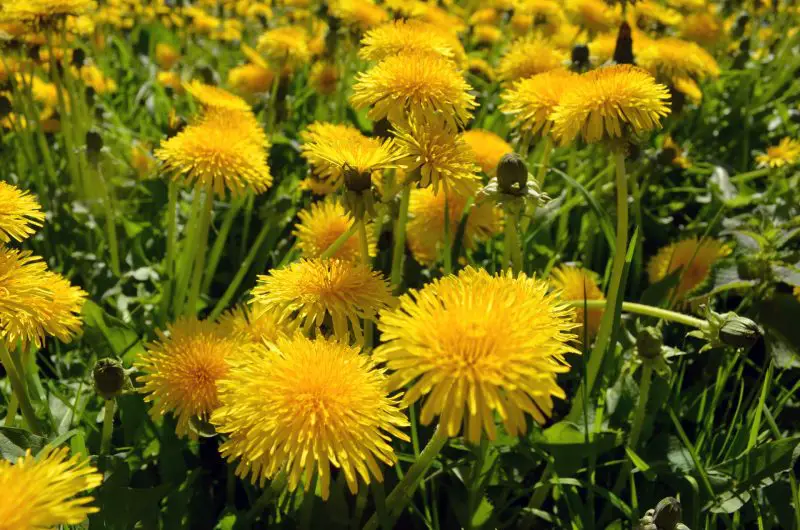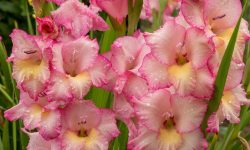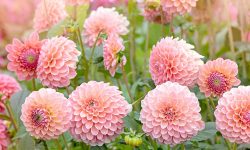Dandelions are among the most recognizable wildflowers, known for their bright yellow blooms and fluffy seed heads. Understanding when dandelions bloom is important for gardeners who want to enjoy their beauty or manage their growth. Their flowering season provides insights into garden timing, pollinator activity, and soil health.
These resilient plants can bloom multiple times in a year under favorable conditions. Knowing their bloom cycle allows gardeners to plan care routines, from mowing to fertilization, to encourage or control growth. Observing when dandelions bloom also helps in attracting bees, butterflies, and other pollinators, contributing to a thriving garden ecosystem. Proper knowledge ensures a balance between enjoying their charm and maintaining garden order.
Understanding Dandelions and Their Life Cycle

Dandelions are hardy perennial plants that can thrive in a wide range of environments. They grow from a deep taproot, which allows them to access water and nutrients even in poor soils. The life cycle begins with seed germination, which usually occurs in early spring when soil temperatures reach about 50 degrees Fahrenheit. Young seedlings develop rosettes of leaves close to the ground, allowing the plant to store energy and prepare for flowering. This growth stage is critical for establishing a healthy root system that will support multiple bloom cycles.
Once established, dandelions produce bright yellow flower heads that are actually composed of hundreds of tiny florets. Each floret is capable of producing a seed, which contributes to the plant’s prolific nature. Flowering typically starts in spring but can continue intermittently throughout the summer and fall under favorable conditions. Dandelions have evolved to reproduce quickly, ensuring their survival in a variety of climates. Their ability to self-seed and regrow from roots makes them both a charming wildflower and a persistent garden presence.
Pollination plays an essential role in the life cycle. Bees, butterflies, and other insects are attracted to the vibrant yellow flowers, facilitating cross-pollination. After pollination, the flower transforms into the familiar fluffy seed head. Seeds are dispersed by wind, allowing dandelions to colonize new areas efficiently. Understanding this cycle helps gardeners plan when to encourage blooms for pollinators or control growth to prevent unwanted spreading. Observing the timing of flowering and seed dispersal provides insights into managing dandelions effectively while appreciating their ecological benefits.
Factors Affecting Dandelion Blooming
Soil Quality
Soil quality is a key factor that influences when and how vigorously dandelions bloom. These plants prefer well-drained soils with moderate fertility. Poor soil conditions can limit growth, resulting in smaller or delayed blooms. Nutrient-rich soils, particularly those with adequate nitrogen, phosphorus, and potassium, promote lush foliage and abundant flowering. Gardeners often notice that dandelions growing in compacted or depleted soils tend to bloom later and produce fewer seeds. Improving soil quality through organic amendments or compost can help the plant reach its full flowering potential.
Besides fertility, soil texture affects water retention and root penetration. Sandy soils drain quickly but may require more frequent watering, while clay soils retain moisture but can become compacted. Dandelions have deep taproots, so they are somewhat tolerant of poor soils, but optimal growth occurs in loamy, well-aerated conditions. Regular monitoring and minor soil adjustments ensure that dandelions establish strong roots, which supports consistent blooming. By addressing soil quality, gardeners can predict flowering times more accurately and enjoy healthier, more vibrant blooms.
Sunlight Exposure
Sunlight exposure directly impacts the timing and intensity of dandelion blooms. Dandelions thrive in full sun, which encourages strong stem growth and vibrant yellow flowers. Insufficient sunlight can cause slower development, delayed flowering, and fewer blooms overall. Gardeners who plant dandelions in shaded areas may notice smaller flowers and less frequent flowering cycles. Full sunlight also supports photosynthesis, which provides energy for both foliage and flower production. Understanding the importance of sunlight helps gardeners decide where to allow dandelions to grow or when to provide supplemental lighting in controlled environments.
Even partial shade affects bloom quality. While dandelions can survive in limited light, flower heads may be smaller, and the plants may stretch toward sunlight, creating weaker stems. Seasonal changes in sunlight intensity also influence bloom timing; early spring sunlight is ideal for initial flowering, while high summer heat may slow flower production. By positioning dandelions in areas with consistent sun exposure, gardeners can ensure timely blooms, robust growth, and optimal pollinator attraction. Managing sunlight effectively allows for a longer, more predictable flowering season.
Temperature and Climate
Temperature and overall climate play a crucial role in dandelion flowering patterns. Dandelions bloom most actively when temperatures range between 50 and 77 degrees Fahrenheit. Cool spring weather triggers germination and early flowering, while prolonged heat in summer may temporarily slow bloom production. Extreme cold or frost can damage seedlings, delaying flowering or reducing the number of blooms. Gardeners in colder regions often see blooms start later in the season, while those in temperate climates may enjoy multiple flowering cycles throughout the year.
Climate factors such as rainfall, humidity, and seasonal variability also influence bloom success. Adequate rainfall ensures soil moisture is sufficient for strong growth, whereas drought conditions can stress plants and delay flowering. Conversely, overly wet conditions can lead to root rot, negatively impacting blooms. Understanding local climate patterns allows gardeners to anticipate flowering times and implement interventions like supplemental watering or temporary shading. By aligning planting and care practices with temperature and climate, dandelions can flourish and produce consistent, long-lasting blooms that support both garden aesthetics and pollinator activity.
How to Extend Dandelion Blooming
Regular Deadheading
Regular deadheading is a key practice for extending dandelion blooming. Removing spent flowers prevents the plant from focusing energy on seed production, redirecting nutrients toward producing new blooms. By consistently trimming faded flowers, gardeners encourage dandelions to continue flowering throughout the season. Deadheading also helps maintain a tidy appearance in the garden and reduces the spread of unwanted seeds. This practice ensures a longer, more vibrant display of yellow flowers, benefiting both the garden’s aesthetics and local pollinators.
Timing and technique are important when deadheading. Flowers should be removed just as they begin to wilt, cutting back to the base of the stem. Avoid damaging nearby leaves or the central rosette, as this can hinder future growth. For larger clover beds or wildflower gardens, deadheading can be done systematically to prevent overwhelming the plants. Combined with proper watering, sunlight, and soil care, regular deadheading significantly extends the flowering period of dandelions. Gardeners who adopt this method enjoy continuous blooms, healthier plants, and a thriving habitat for bees, butterflies, and other pollinators throughout the growing season.
Optimizing Soil and Fertilization
Maintaining fertile, well-balanced soil helps extend dandelion blooming. Nutrient-rich soil supports sustained growth, encouraging repeated flowering cycles. Dandelions benefit from moderate nitrogen levels to promote foliage, along with phosphorus and potassium for strong root and flower development. Regular soil testing can identify deficiencies, allowing gardeners to apply the right amendments and maintain optimal conditions. Organic compost or slow-release fertilizers are ideal choices, providing steady nutrition without overwhelming the plants.
Proper soil management also improves water retention and root stability, ensuring dandelions can withstand environmental stress and continue blooming. Loamy, well-drained soil prevents root rot while providing adequate aeration for nutrient absorption. Adjusting soil pH to slightly acidic or neutral levels further supports flower production. By optimizing soil fertility and maintaining balanced nutrition, gardeners can significantly extend the flowering season, resulting in more vibrant blooms and a healthier ecosystem. Healthy soil ensures dandelions remain resilient, visually striking, and beneficial for pollinators throughout the season.
Managing Pests and Diseases
Protecting dandelions from pests and diseases is crucial for maintaining prolonged blooming. Common threats include aphids, leaf miners, and fungal infections like powdery mildew. Left unmanaged, these issues can weaken plants, reduce flower size, and shorten the flowering period. Early detection and intervention prevent the spread of pests or disease, ensuring plants maintain energy for producing vibrant blooms. Gardeners can monitor leaves and stems regularly, removing affected parts and applying natural or targeted treatments as needed.
Preventative practices also help extend flowering. Maintaining proper spacing between plants improves airflow, reducing the risk of fungal infections. Companion planting with beneficial insects or using organic deterrents can limit pest damage. Ensuring plants have sufficient sunlight, proper watering, and nutrient-rich soil further strengthens their resilience. By actively managing pests and diseases, gardeners create optimal conditions for dandelions to thrive. Healthy, protected plants produce more flowers over a longer period, enhancing garden aesthetics and supporting pollinator activity.
Seasonal Care Tips for Dandelions
Spring Care
Spring is the ideal time for dandelion growth, as rising temperatures and increased sunlight stimulate germination and flowering. Early in the season, gardeners should monitor soil moisture, ensuring seeds and young seedlings have enough water to establish strong roots. Light watering during dry spells supports uniform growth and prepares the plant for multiple flowering cycles. Spring also provides an opportunity to apply organic compost or balanced fertilizer, enriching the soil with nutrients that support lush foliage and abundant blooms. This helps plants develop energy reserves for continued flowering throughout the season.
Spring care also involves controlling weeds and removing debris. Dandelions are strong competitors, but young plants can be crowded out by fast-growing weeds. Hand weeding or light tilling ensures seedlings receive adequate sunlight and nutrients. Regular observation for early signs of pests, such as aphids, helps prevent damage before flowering begins. By providing attentive care during spring, gardeners set a strong foundation for healthy dandelions. Proper moisture, nutrition, and weed management in this season maximize bloom potential and establish resilient plants that will sustain flower production throughout the growing year.
Summer Care
During summer, dandelions face higher temperatures and potential drought, making consistent care crucial. Deep, infrequent watering encourages strong root growth, enabling plants to withstand heat stress while continuing to bloom. Mulching around plants helps retain soil moisture and keeps roots cool. Excessive heat can sometimes delay flowering, so providing shade in extremely hot conditions may help preserve blooms. Maintaining adequate nutrition supports energy for continued flowering and resilience against environmental stress.
Summer care also includes monitoring for pests and diseases that can reduce bloom quality. Aphids, leaf miners, and fungal infections may become more active during warm, humid periods. Regular inspection and intervention prevent these problems from spreading. Deadheading spent flowers encourages new blooms and prolongs the flowering season. By combining proper watering, nutrition, and pest management, gardeners ensure that dandelions remain vibrant and productive during summer. These practices maintain garden aesthetics, attract pollinators, and support a thriving ecosystem even under challenging seasonal conditions.
Fall Care
Fall is a crucial season for dandelions, as the plants prepare for dormancy while continuing to provide garden benefits. Cooler temperatures and moderate rainfall create ideal conditions for late-season blooms and seed production. Gardeners should continue monitoring soil moisture, ensuring plants remain hydrated without being waterlogged. Fall is also an excellent time to apply organic compost or slow-release fertilizer to replenish nutrients, strengthening roots and supporting healthy flowering before winter. Proper nutrition and soil care during this season help dandelions store energy, ensuring vigorous growth and abundant blooms in the following spring.
In addition to soil management, fall care involves maintaining plant structure and controlling weeds. Taller or overgrown plants can be lightly trimmed to encourage denser regrowth and reduce competition for sunlight. Removing weeds prevents them from overshadowing dandelions, which could limit late-season flowering and seed dispersal. Fall is also a good time to monitor for pests and diseases that may persist from summer. Addressing these issues before winter reduces the risk of damage and ensures plants remain healthy. By following attentive fall care practices, gardeners can extend the flowering season, protect the soil, and support pollinators, keeping dandelions productive and visually appealing well into late autumn.
Winter Care
Winter care for dandelions depends largely on regional climate but remains important for ensuring strong growth in spring. In colder areas, dandelions enter dormancy, slowing growth while roots continue to stabilize soil and store nutrients. Avoid stepping on or compacting the soil around dormant plants, as damaged roots may weaken the plant and reduce early spring blooms. Light mulching can insulate soil and protect roots from freezing temperatures, ensuring the plant survives harsh winter conditions. In milder climates, dandelions may continue slow growth, producing occasional blooms during warm spells.
Winter also provides an opportunity for gardeners to plan upcoming care and maintenance. Checking for bare patches or soil erosion allows for early interventions, such as reseeding or adding organic matter, to prepare the garden for spring. Watering is rarely necessary, as natural precipitation usually suffices. Preventing damage during winter ensures dandelions emerge strong when temperatures rise. By combining protective measures, soil maintenance, and observation, gardeners can guarantee that dandelions bloom vibrantly in the next season. Winter care supports plant resilience, extends the overall flowering cycle, and contributes to a thriving, pollinator-friendly garden ecosystem.
Benefits of Dandelion Blooming
Supporting Pollinators
Dandelion blooms play a vital role in supporting pollinators. Their bright yellow flowers provide an early and abundant source of nectar and pollen, attracting bees, butterflies, and other beneficial insects. This is especially important in spring when other flowers may not yet be in bloom. By offering a reliable food source, dandelions help sustain pollinator populations, which in turn support broader ecosystem health and the productivity of nearby plants and crops. Gardeners who encourage dandelion flowering contribute to a balanced, thriving garden environment that benefits both flora and fauna.
The timing and frequency of blooms are critical for pollinator support. Dandelions often flower multiple times in a season, providing continuous nourishment for insects. A consistent presence of flowers ensures that pollinators can feed regularly, promoting their survival and reproduction. Additionally, dandelions attract diverse species, increasing pollination efficiency across the garden. By strategically managing bloom periods, such as deadheading spent flowers or planting in sunlit areas, gardeners can maximize the ecological benefits. Healthy, abundant dandelion blooms not only enhance garden aesthetics but also create a vital habitat that fosters biodiversity and strengthens the local ecosystem.
Improving Soil Health
Dandelions contribute to soil health through their deep taproots, which break up compacted soil and enhance aeration. These roots draw nutrients from deep layers, making them available to other plants. As dandelion leaves and stems decompose, they add organic matter to the soil, improving structure, moisture retention, and microbial activity. This natural process enriches the soil, reducing the need for chemical fertilizers and promoting sustainable gardening practices.
Moreover, dandelions act as indicators of soil fertility. Their growth patterns reveal nutrient deficiencies or compaction issues, allowing gardeners to address problems early. By maintaining healthy dandelion blooms, gardeners indirectly improve soil quality over time. This dual role of physical soil enhancement and nutrient cycling supports long-term garden productivity. Rich, well-structured soil not only benefits dandelions but also enhances the growth of surrounding plants, creating a thriving, resilient garden ecosystem.
Aesthetic and Ecological Value
Dandelion blooms add vibrant color and texture to gardens and landscapes. Their cheerful yellow flowers brighten lawns, meadows, and wildflower beds, creating visual interest from spring through early summer. Beyond aesthetics, these blooms play an ecological role by attracting pollinators and supporting wildlife habitats. The presence of dandelions enhances biodiversity, making gardens more resilient and balanced.
The ecological impact extends to seed dispersal and food web support. Dandelion seeds provide nourishment for birds, while flowers sustain insect populations. Their widespread growth helps maintain natural cycles of plant reproduction and pollination. Gardeners who appreciate dandelions for both beauty and function can foster harmonious landscapes where visual appeal and environmental benefits coexist. By embracing dandelion blooms, gardens gain ecological stability, aesthetic charm, and lasting support for wildlife.
Common Mistakes That Shorten Dandelion Blooming
Overwatering
Overwatering dandelions can significantly shorten their blooming period. While these plants require consistent moisture, excessive water can saturate the soil, leading to root rot and poor flower production. Waterlogged conditions also deprive roots of oxygen, weakening the plant and making it more susceptible to disease. Gardeners often mistakenly assume that more water will produce bigger blooms, but overwatering can actually reduce flower size and delay flowering cycles. Monitoring soil moisture and ensuring proper drainage is crucial for maintaining healthy, long-lasting blooms.
Timing and method of watering also matter. Light, frequent watering is ideal for seedlings, while established plants benefit from deeper, less frequent irrigation. This encourages the development of a strong taproot, which supports vigorous flowering. Mulching can help retain moisture without overwatering, balancing hydration and aeration. By avoiding excessive watering, gardeners allow dandelions to flourish naturally, producing robust blooms and seeds. Understanding water requirements ensures plants remain healthy, vibrant, and able to sustain longer flowering periods throughout the growing season.
Planting in Shaded Areas
Planting dandelions in shaded areas is a common mistake that limits blooming potential. Insufficient sunlight reduces photosynthesis, resulting in weaker stems, smaller flowers, and delayed bloom cycles. While dandelions can survive partial shade, their ability to produce abundant, vibrant flowers is compromised. Gardeners often find that shaded dandelions stretch toward sunlight, becoming leggy and prone to breakage. Positioning dandelions in full sun is essential for optimal flowering, as it ensures proper energy production and promotes healthy plant structure.
Shaded planting can also affect pollinator attraction. Fewer blooms mean less nectar and pollen, reducing visits from bees, butterflies, and other beneficial insects. This not only impacts dandelion reproduction but also the overall ecological balance of the garden. By choosing sunny locations and removing competing vegetation that casts shade, gardeners can maximize bloom quantity and quality. Adequate sunlight exposure ensures dandelions remain strong, productive, and visually striking throughout their flowering season.
Ignoring Soil Nutrition
Neglecting soil nutrition is another factor that shortens dandelion blooming. Even though dandelions are hardy and can grow in poor soils, nutrient deficiencies lead to smaller, less vibrant flowers. Lack of nitrogen limits foliage growth, while insufficient phosphorus and potassium reduce bloom production and root strength. Gardeners who ignore soil testing may inadvertently slow plant growth and reduce flowering frequency, making blooms sparse and less attractive. Regularly amending soil with organic matter or fertilizers tailored to deficiencies ensures dandelions reach their full flowering potential.
Proper nutrition also strengthens plants against pests and environmental stress. Healthy dandelions can endure periods of heat, drought, or mild frost, maintaining consistent bloom cycles. Additionally, nutrient-rich soils enhance root development, which supports multiple flowering cycles throughout the season. By monitoring and correcting soil nutrition, gardeners create optimal conditions for dandelions to thrive, producing abundant, long-lasting blooms that attract pollinators and contribute to a vibrant, sustainable garden ecosystem.
When Do Dandelions Bloom: Seasonal Insights
Dandelions typically begin blooming in early spring, often as soon as temperatures rise above 50 degrees Fahrenheit. The first flowers usually appear in March or April, depending on the local climate. These early blooms provide one of the first food sources for pollinators emerging from winter dormancy. Spring flowering is influenced by soil temperature, sunlight, and moisture. Cool, moist conditions encourage rapid growth, resulting in vibrant, abundant flower heads that can persist for several weeks before transitioning into seed production.
During summer, dandelions may continue to bloom intermittently, especially in regions with temperate climates. While peak bloom often occurs in spring, warm weather, adequate rainfall, and nutrient-rich soils can trigger additional flowering cycles. Summer blooms tend to be smaller in size but still provide valuable nectar and pollen for pollinators. Gardeners may notice a more irregular flowering pattern, as plants balance energy between seed production, foliage growth, and environmental stress adaptation, such as heat or drought.
In fall, some dandelion varieties may produce a final flush of blooms if temperatures remain mild. This late-season flowering is less common in colder regions but can extend the overall bloom period in temperate climates. Fall blooms support pollinators before winter and contribute to natural seed dispersal for the next year. Understanding these seasonal patterns allows gardeners to anticipate flowering times, plan care routines, and create a garden environment that maximizes both visual appeal and ecological benefits throughout the year.
Extending Dandelion Blooming Throughout the Year
Providing Adequate Sunlight
Sunlight is essential for extending dandelion blooming throughout the year. These plants thrive in full sun, which supports photosynthesis, energizes flower production, and strengthens stems. Without sufficient sunlight, dandelions may produce smaller flowers, bloom less frequently, and appear leggy. Gardeners who position dandelions in sunny areas maximize bloom duration and enhance overall plant health. Proper sunlight also attracts more pollinators, creating a thriving garden ecosystem.
Seasonal changes affect sunlight availability. In early spring and late fall, lower sun angles may reduce light exposure, potentially shortening flowering cycles. Strategic placement of dandelions in the garden ensures consistent sunlight throughout the day. Removing nearby plants or structures that cast shade can further improve conditions. By prioritizing sunlight, gardeners help dandelions maintain vibrant blooms for longer periods. This simple yet effective practice increases both aesthetic appeal and ecological benefits, supporting pollinators and encouraging repeated flowering throughout the growing season.
Soil Enrichment
Maintaining nutrient-rich soil is crucial for extending dandelion blooming. Fertile soil with balanced levels of nitrogen, phosphorus, and potassium supports vigorous leaf and flower growth. Organic compost or slow-release fertilizers provide steady nutrition, preventing premature decline in bloom quality. Healthy soil enhances root strength, allowing plants to endure environmental stress and continue producing flowers throughout the year.
Proper soil management also improves water retention and microbial activity, both of which are essential for sustained flowering. Loamy, well-drained soil ensures that dandelion roots receive adequate oxygen while accessing nutrients efficiently. Regular monitoring of soil pH and nutrient levels allows gardeners to make adjustments that maximize bloom longevity. By enriching soil consistently, dandelions can produce multiple flowering cycles, ensuring prolonged visual appeal, pollinator support, and overall garden health.
Regular Maintenance Practices
Regular maintenance practices such as deadheading, pruning, and weeding play a vital role in extending dandelion blooming. Removing spent flowers redirects energy into new blooms rather than seed production. Light pruning of older leaves encourages fresh growth, while weeding reduces competition for sunlight, nutrients, and water. These practices keep dandelions healthy and productive throughout the season.
Maintenance also helps prevent disease and pest buildup. Keeping the area around dandelions clean and well-aerated reduces fungal risks and discourages pests from weakening the plants. Combined with proper watering, sunlight, and soil care, regular maintenance ensures dandelions bloom longer, producing vibrant, abundant flowers. Gardeners who commit to these simple routines enjoy a continuous display of yellow blossoms and a thriving habitat for pollinators, supporting both aesthetic beauty and ecological balance.
FAQ About When Dandelions Bloom
When do dandelions start blooming?
Dandelions usually start blooming in early spring when soil temperatures reach around 50 degrees Fahrenheit. In mild climates, they may bloom as early as March, while in colder regions, flowering can begin later. Early blooms provide vital nectar for pollinators and set the stage for multiple flowering cycles throughout the season.
Can dandelions bloom more than once per year?
Yes, dandelions can bloom multiple times annually. After the initial spring bloom, favorable conditions such as adequate sunlight, moisture, and nutrient-rich soil can trigger secondary flowering in summer and, in mild climates, even in fall. Proper care and maintenance enhance the likelihood of repeated blooms.
How does sunlight affect dandelion blooms?
Sunlight directly influences the size, frequency, and vibrancy of dandelion flowers. Full sun encourages strong stems and abundant blooms, while shaded conditions can result in smaller, fewer, and delayed flowers. Consistent exposure to sunlight maximizes flowering and supports healthy plant growth.
What soil conditions support long-lasting blooms?
Dandelions thrive in fertile, well-drained soil with balanced nutrients. Nitrogen promotes leaf growth, phosphorus supports flowers and roots, and potassium enhances overall plant vigor. Organic compost, mulch, or slow-release fertilizers can improve soil quality, ensuring multiple blooming cycles and sustained flower production.
Are dandelion blooms beneficial for wildlife?
Absolutely. Dandelion flowers provide nectar and pollen for bees, butterflies, and other pollinators. Seeds serve as food for birds, while leaves offer forage for small mammals. Their presence enhances biodiversity, supports pollinator populations, and contributes to a healthy, balanced garden ecosystem.
Conclusion
Dandelions are more than just common wildflowers; they are valuable contributors to garden health and biodiversity. Their vibrant blooms support pollinators, improve soil structure, and provide food for wildlife. By understanding their blooming patterns and implementing proper care, gardeners can enjoy extended flowering seasons. Sunlight, soil quality, watering, and regular maintenance all play crucial roles in maximizing bloom duration. Whether in a lawn, meadow, or wildflower garden, dandelions bring both beauty and ecological benefits. With mindful management, these resilient plants can thrive year-round, enhancing garden aesthetics while supporting a sustainable and balanced ecosystem.






